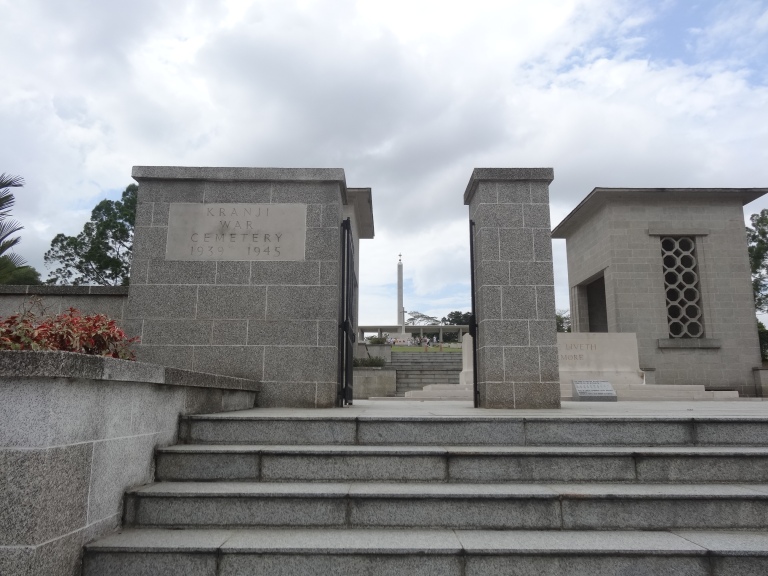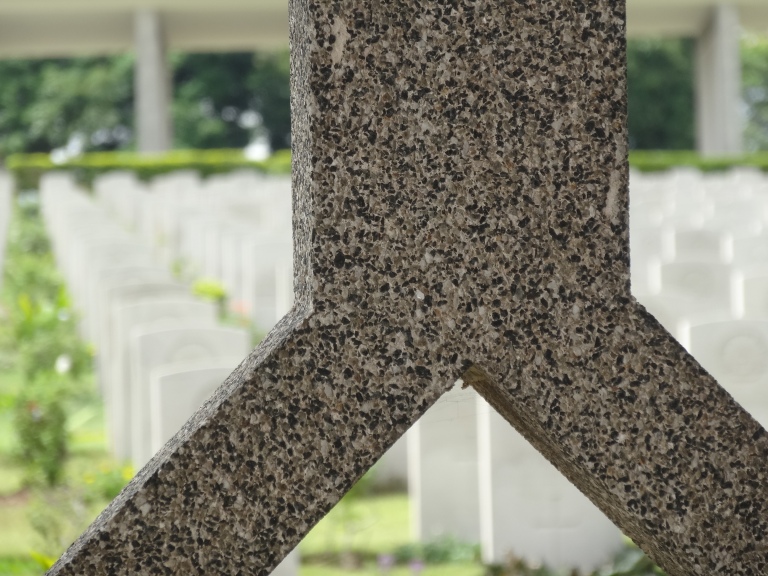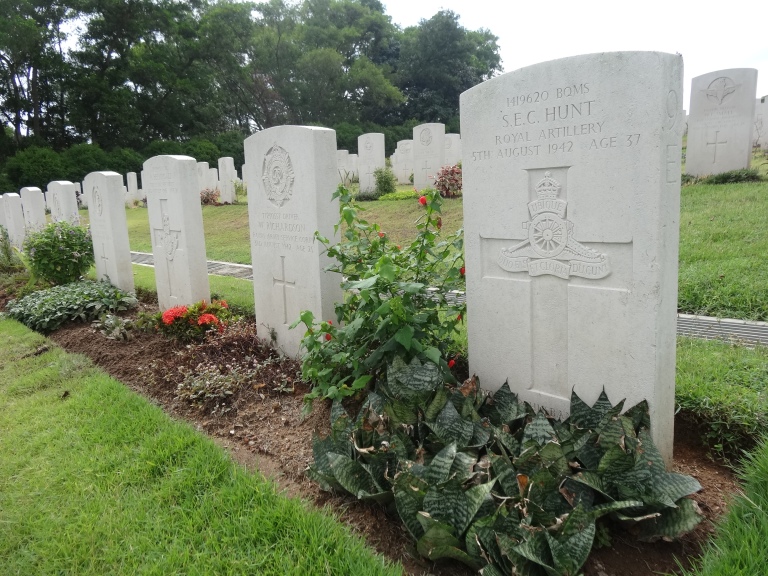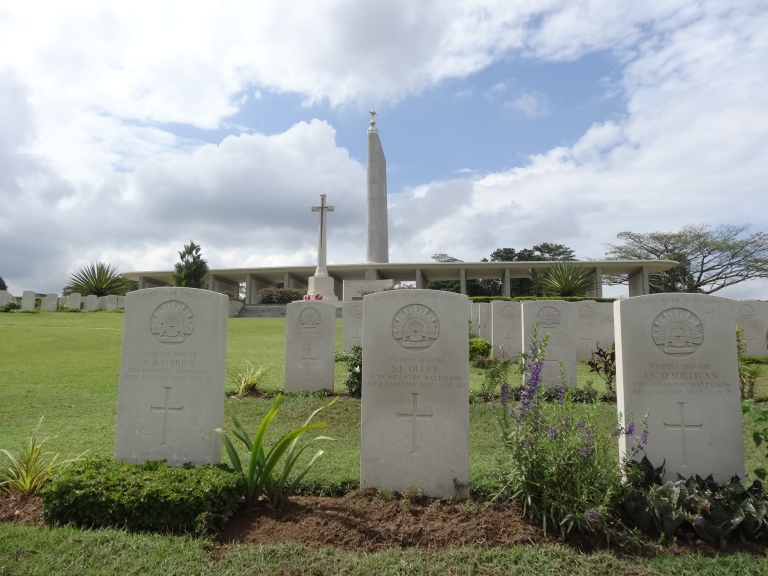Having visited Singapore many times in the past few years, and having recently read up on the role of Singapore during World War 2, I thought it was only right that I made a visit to the Kranji War Cemetery to pay my respects to the many fallen soldiers of the era.


I took a very long MRT ride on the Red Line all the way to Kranji station, which incidentally is also the nearest station to the Sungei Buloh Wetlands Reserve. I had a rough idea of where the War Cemetery was, and I tried to find it on foot, even with the threat of grey clouds and an imminent monsoon overhead. However, I must have turned down the wrong road, as I completely missed the cemetery. I turned back to the MRT station and queued up for a taxi. When my taxi arrived, and I asked to go to the Kranji War Cemetery, the driver was at first very reluctant because it was so close. He told me to walk! After a little discussion, he eventually gave me the little ride to the cemetery.
When I got to the Kranji War Cemetery, I was startled to find that it was very quiet, even for a cemetery! Hardly any tourists at all! There was a large group of Americans who were being given a guided tour of the place, but apart from that, it was just me.


Of course the entrance is free to the cemetery, but donations are accepted otherwise. As you would expect with a cemetery, there are rows and rows and rows of gravestones, many of which are unmarked. It was very humbling to walk past them and read the messages on each one. You can also see the great attention to detail in the flower beds in front of each gravestone. I have been to the South Park Street Cemetery in Kolkata and part of the charm of that place is that it is crumbling and overgrown; it gives it a character all of its own. However, here at Kranji, the cemetery is immaculately kept in pristine condition (as you would expect in Singapore), and I saw a few Indian gardeners keeping the foliage in good condition and watering the grass during my visit. As such, the grass underfoot was slightly damp, so if you are wearing plimsolls like I did, then you may feel a little wet in that area after a while.
It was, of course, not possible to look at each individual gravestone, but I did take a sombre walk along many rows of those gravestones and reflected on the service these young men gave to protect our freedom. Some of the ages of the fallen also surprised me, as I noticed many teenagers who had lost their lives in battle. So many young men who left home to defend their country in time of war (the south east Asian amphitheatre of World War 2 was particularly barbaric with Japanese invasion) and never returned to their mothers and fathers.


At the rear of the cemetery is the main memorial, where newly-laid reefs stood, presumably from the American tourists that had just left. I then realised I was the only person left in the whole cemetery, which added to my sombre and respectful mood. This area of the cemetery has some cover, which may shield you from either the sun’s rays or the tropical storms, depending on the weather you are seeing in Singapore at the time. I took a little look at the memorial at the back here, and yet more names of fallen soldiers were inscribed on the walls. There were so many victims of the war, and as it says on the memorial in more than just a few languages: THEY DIED FOR ALL FREE MEN.
I plan to write about The Fall of Singapore during World War 2 (which Churchill described as “the worst military capitulation in British history”) soon, so stay tuned.


Peace, no war!
So, how far is it from the point you took the taxi to the cemetery? A minute? Hehe
LikeLike
I think it took the driver about 3 minutes, and he had to stop a red light on the way in that 3 minutes, too! He wasn’t impressed, but then again he did get money for it 😉
LikeLike
Yeah, he should be grateful! Haha
LikeLike